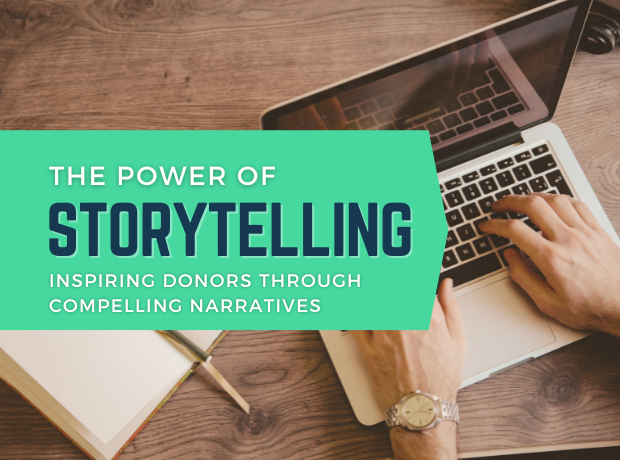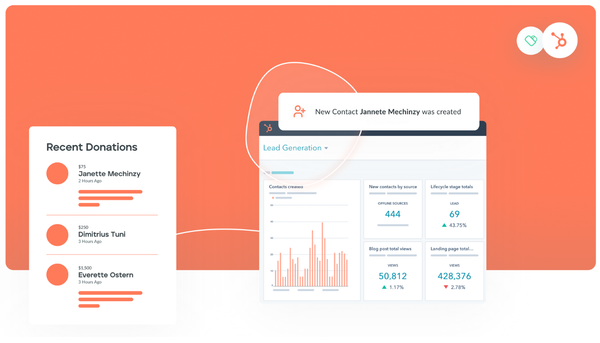The Power of Storytelling in Fundraising: Inspiring Donors through Compelling Narratives
Discover how captivating stories can ignite emotions, foster connections, and drive impactful contributions, revolutionizing the way you raise funds for your cause.

In the competitive landscape of fundraising, organizations are constantly seeking innovative ways to inspire donors and stand out from the crowd. While data and statistics play a crucial role in showcasing impact, there is an often overlooked tool that can captivate donors and create lasting connections: storytelling. Harnessing the power of narratives can transform your fundraising efforts, compelling donors to take action and support your organization's mission.
But what makes storytelling so incredible in the world of fundraising? It's the ability to weave a tapestry of emotions, experiences, and aspirations that resonate deeply with your audience. Stories have the unique power to transcend the boundaries of logic and touch the hearts of individuals. They can evoke empathy, ignite passion, and drive meaningful change.
In this article, we'll dive into the incredible impact of storytelling in fundraising and provide actionable insights on how to make it highly effective for crafting more compelling fundraising appeals.
Connecting on an Emotional Level
In the realm of fundraising, it is vital to establish an emotional connection with your audience. Storytelling allows you to tap into the human experience, enabling donors to relate to the cause on a personal level. By presenting real-life stories of individuals whose lives have been positively impacted by your organization, you can elicit empathy and compassion, motivating donors to contribute and make a difference.
To deepen this emotional connection, consider incorporating elements such as vivid descriptions, relatable anecdotes, and heartfelt testimonials. Paint a picture that engages the senses and stirs emotions, helping donors understand the challenges faced by those you serve. By creating a sense of shared empathy, you can inspire donors to take action and support your cause.
Crafting Compelling Narratives
To inspire donors, your stories need to be carefully crafted to engage and resonate with your target audience. Here are a few additional ideas to create narratives that nonprofits can use to effectively connect with donors and prospective donors:
Stories of Impact: Share stories that highlight the tangible impact of your organization's work. Showcase specific outcomes, such as improved access to education, healthcare, or clean water. Demonstrate how donors' contributions directly contribute to positive change, giving them a sense of fulfillment and purpose.
Personal Testimonials: Incorporate personal testimonials from beneficiaries, volunteers, or staff members. These firsthand accounts add authenticity and credibility to your storytelling, allowing donors to hear directly from those who have experienced the impact of your organization's work.
Local Community Stories: Tell stories that resonate with your local community. Highlight individuals or families within the community who have benefited from your organization's efforts. This helps donors see the direct impact of their support on the people and places they care about, fostering a sense of connection and engagement.
Visual Storytelling: Enhance your narratives with compelling visuals, such as photographs or videos. Visual storytelling has a powerful impact, capturing attention and evoking emotions in a way that words alone may not achieve. Use visuals to bring your stories to life and create a lasting impression on your audience.
By expanding your storytelling repertoire to include stories of impact, personal testimonials, local community stories, and visual storytelling, you can create a diverse and captivating narrative landscape that resonates with your donors and inspires them to take action.
Authenticity and Transparency
Transparency and authenticity are vital when sharing stories with your donors. They seek organizations that are genuine, trustworthy, and committed to their cause. Avoid exaggeration or manipulation, and focus on telling stories that accurately represent the reality of the individuals you serve. Share both the successes and the challenges, demonstrating the integrity of your work and inspiring confidence in potential donors.
In addition to being transparent, invite donors to be part of the storytelling process. Encourage them to share their own experiences, thoughts, and ideas related to your cause. By fostering a sense of collaboration and inclusivity, you create a space where donors feel valued and empowered, further strengthening their connection to your organization.
Remember, authenticity and transparency build trust, and trust is the foundation for lasting donor relationships.
Multi-Platform Storytelling
In today's digital era, storytelling opportunities are not limited to traditional channels. Embrace various platforms to engage your audience and reach new donors effectively.
Podcasts and Audio Stories: Utilize the power of audio storytelling through podcasts or recorded stories. This medium allows donors to listen and connect with narratives while on the go or during their daily routines. Consider interviewing beneficiaries or experts in your field to provide a deeper understanding of your organization's impact.
Live Events and Webinars: Organize live events or webinars where you can share stories in real-time. These interactive platforms allow for direct engagement, fostering a sense of community and urgency. Donors can ask questions, share their own experiences, and feel a deeper connection to your cause. Plus, here's a handy tip: Using an online teleprompter can help you confidently convey your message, ensuring a smooth and professional presentation.
Impact Reports and Annual Reviews: Leverage written reports and annual reviews as storytelling tools. Use compelling narratives, data visualization, and infographics to present the impact of your organization's work. This format provides a comprehensive overview of your achievements and allows donors to see the collective progress made possible through their support.
Collaborative Social Media Campaigns: Partner with influencers, organizations, or celebrities to launch collaborative social media campaigns. By tapping into their existing networks, you can amplify your storytelling efforts and reach new audiences. Encourage followers to share their personal stories or experiences related to your cause, creating a sense of community and collective action.
By embracing multi-platform storytelling, you can adapt your narratives to different mediums and engage donors through various channels. This approach increases the visibility of your organization's work, fosters deeper connections, and attracts a diverse range of donors who resonate with your cause.
Empowering Donors as Heroes
Transforming donors into heroes is a powerful approach that can cultivate long-term partnerships. Make your donors feel like they are an integral part of the story by showcasing the impact of their contributions. Share testimonies from beneficiaries expressing gratitude for their support, creating a sense of fulfillment and encouraging continued involvement.
Additionally, provide opportunities for donors to actively participate and contribute beyond financial support. Engage them in volunteering, advocacy, or peer-to-peer fundraising initiatives. Recognize and celebrate their efforts, highlighting the collective impact achieved through their dedication and commitment.
By empowering donors as heroes, you not only strengthen their connection to your organization but also inspire a sense of ownership and pride in being agents of change. Together, you can drive your organization's mission forward and create a lasting positive impact in the lives of those you serve.
Measuring Impact and Adjusting Strategies
To gauge the effectiveness of your storytelling efforts, establish metrics to measure impact. Track donor engagement, conversion rates, and donation levels associated with specific narratives. Analyze the data to identify patterns and adjust your storytelling strategies accordingly. Experiment with different story formats, platforms, and delivery methods to optimize donor response.
Furthermore, consider gathering qualitative feedback from donors to gain insights into their perception of your storytelling efforts. Conduct surveys or interviews to understand how the narratives resonate with them and whether they feel inspired to take action.
By continuously measuring the impact of your storytelling and seeking donor feedback, you can refine your strategies, ensuring they align with donor expectations and preferences. Stay adaptable and open to evolving your storytelling approach as you learn from the data and the insights shared by your supporters.
Through a data-driven and iterative approach, you can maximize the effectiveness of your storytelling, creating compelling narratives that drive donor engagement and ultimately lead to increased support for your organization's mission.
The impact of storytelling in fundraising is profound and can be a game-changer for your organization. By harnessing the power of narratives that connect emotionally and utilizing compelling storytelling ideas, you can inspire donors and create lasting relationships. Craft stories that highlight personal journeys, collaborative partnerships, stories of hope, and transformational experiences to engage your audience on a deeper level.
Through authenticity, transparency, and leveraging various storytelling platforms, you can empower donors as heroes in your cause. Measure the impact of your storytelling efforts and adapt your strategies accordingly, always seeking to optimize donor response. By embracing storytelling as a central pillar of your fundraising approach, you can unlock the immense potential to captivate donors, build strong connections, and drive your organization's mission forward.





